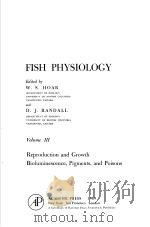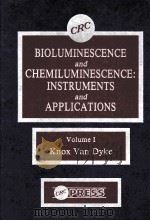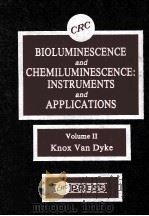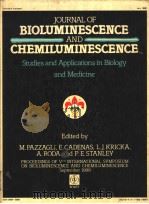《Bioluminescence》
| 作者 | 编者 |
|---|---|
| 出版 | 未查询到或未知 |
| 参考页数 | 649 |
| 出版时间 | 1952(求助前请核对) 目录预览 |
| ISBN号 | 无 — 求助条款 |
| PDF编号 | 812589128(仅供预览,未存储实际文件) |
| 求助格式 | 扫描PDF(若分多册发行,每次仅能受理1册) |

CHAPTER Ⅰ BACTERIA1
Saprophytic Luminous Species1
Classification6
Parasitic Luminous Species9
Symbiotic Luminous Species10
Structure11
Purpose of the Light;Uses to Man14
Immune Reactions14
Bacteriophage17
Culture Media and Metabolism18
Carbohydrates and Polyhydric Alcohols19
Organic Acids21
Nitrogen Sources22
Growth Curves24
Mutants26
Luciferin-luciferase Reaction30
Enzymes32
Relation to Oxygen33
Luminous Bacteria as Tests for Oxygen34
Luminescence and Oxygen Pressure36
Respiration and Oxygen Pressure37
Bacterial Luminescence and Cell Respiration38
Flash Kinetics42
Mechanism of Light Emission46
Reducing Action47
Relation to pH50
Osmotic Pressure53
Effect of Salts54
Permeability58
Effect of Radiation59
Visible Light59
Ultraviolet61
X-rays,Radium Rays,etc63
Electrons,Ionized Air,etc64
Effect of High-frequency Sound Waves64
Effect of Temperature64
Very Low Temperatures66
Very High Temperatures66
Luminescence-temperature Curve67
The Effect of Hydrostatic Pressure70
Action of Drugs72
Narcotics and Anesthetics75
Sulfa Drugs76
Quinones77
Antibiotics78
Alkaloids and Glucosides79
Hormones79
Dyes80
Dinitrophenols80
Cyanide81
Carbon Monoxide81
Azide82
Arsenite83
Iodoacetate83
Fluoride83
Pyrophosphate83
Heavy Metals83
Effect of Heavy Water85
Intensity of Light Emission85
Spectral Distribution87
The Emission Spectrum87
Penetrating Radiation90
Biological Effects90
Efficiency of Light Production91
CHAPTER ⅡFUNGI96
Introduction96
Distribution of Luminescence;Classification97
Ascomycetes99
Basidiomycetes,Agaricales99
Basidiomycetes,Phallales107
Genetic Studies108
Histology110
Nutritional Requirements110
Relation to Oxygen112
Effect of Temperature113
Effect of Light114
Effect of Drugs114
Biochemistry115
Physical Properties116
CHAPTER ⅢPROTOZOA AND PORIFERA118
PROTOZOA118
Classification118
Radiolaria119
Structure121
Physiology and Biochemistry121
Dinoflagellates122
Colored Sea Water and Luminescence124
Possible Luminescence of Fresh Water Flagellates126
Classification126
Day and Night Rhythms of Luminescence128
Use of Light129
Morphology130
Physiology130
Noctiluca miliaris132
Structure133
Regulation of Density135
Tentacle Movement and Contractility136
Luminescence137
Biochemistry144
Physical Characteristics145
PORIFERA145
CHAPTER ⅣCNIDARIA148
CLASSIFICATION148
HYDROZOA149
Hydroids151
Hydromedusae153
Histology154
Physiology157
Biochemistry157
Siphonophora158
SCYPHOZOA160
Introduction160
Histology162
Physiology163
Electrical Stimulation163
Ion Effects164
Effect of Illumination166
Biochemistry167
ANTHOZOA168
Alceonacea and Gorgonacea169
Pennatulacea170
Luminescence of Zoophytes170
Histology171
Excitation and Transmission173
Inhibition175
Electroluminogram176
Effect of Salts176
Effect of Illumination177
Action of Drugs178
Biochemistry178
Physical Characteristics180
CHAPTER ⅤCTENOPHORA181
Introduction181
Luminescent Eggs183
Morphology185
Histology186
Physiology187
Effect of Illumination189
Relation to Oxygen193
Biochemistry193
CHAPTER ⅥMISCELLANEOUS SMALL GROUPS195
TURBELLARIA195
NEMERTINEA or RHYNCHOCOELA196
Introduction196
Histology197
Physiology and Biochemistry198
ROTATORIA199
POLYZOA(BRYOZOA ECTOPROCTA)199
CHAETOGNATHA201
ENTEROPNEUSTA OR HEMICHORDATA202
Histology203
Physiology204
Biochemistry204
CHAPTER ⅦANNELIDA206
INTRODUCTION206
POLYCHAETA207
Aphroditidae,Polynoinae209
General209
Histology211
Physiology214
Biochemistry215
Alciopidae216
Tomopteridae216
Syllidae218
Swarming Reactions218
Histology221
Biochemistry222
Nereidae223
Chaetopteridae223
Histology225
Physiology228
Biochemistry229
Use of Light229
Cirratulidoe230
Terebellidae231
Histology232
Biochemistry233
OLIGOCHAETA233
General233
Region of Luminescence234
Use of Light236
Physiology236
Relation to Luminous Bacteria237
Biochemistry238
CHAPTER ⅧMOLLUSCA EXCEPT CEPHALOPODA242
CLASSIFICATION242
GASTROPODA OPISTHOBRANCHIATA243
Pteropods244
Nudibranchs244
Plocamopherus245
Kaloplocamus248
Phyllirho?248
GASTROPODA PROSOBRANCHIATA253
Doliacea253
Heteropoda253
GASTROPODA PULMONATA254
Dyakia striata255
Latia neritoides256
PELECYPODA OR BIVALVIA259
Pholas dactylus259
Histology262
Biochemistry264
Use of Light267
Rocellaria grandis267
CHAPTER ⅨCEPHALOPODA269
INTRODUCTION269
VAMPYROMORPHA272
DECAPODA274
Squid Associated with Luminous Bacteria274
General274
Histology276
Bacteriology278
Squid Producing a Luminous Secretion,Heteroteuthis dispar281
Morphology and Histology281
Biochemistry282
Use of Light283
Squid with Photophores and Intracellular Luminescence283
Histology289
Physiology294
Biochemistry295
OCTOPODA296
CHAPTER ⅩCRUSTACEA297
CLASSIFICATION297
OSTRACODA299
General299
Life History302
Histology302
Luciferin and Luciferase305
Relation to Oxygen306
Oxidized Luciferin and Reversibility of the Reaction307
Specificity of Luciferin and Luciferase309
Purification of Luciferin310
Properties of Purified Luciferin312
Effect of Light313
Relation to Adenosine Triphosphate314
Structure of Luciferin314
Properties of Oxidized Luciferin317
Luciferin-Luciferase Combination317
Purification of Luciferase318
Properties of Luciferase318
Kinetics of Cypridina Luminescence319
Methods319
General Laws321
Mechanism of Light Emission324
Effect of Temperature325
Effect of Pressure327
Effect of H-Ion Concentration327
Effect of Salts328
Effect of Drugs and Narcotics329
Effect of Heavy Water329
Physical Characteristics of the Light329
COPEPODA331
General331
Morphology and Histology334
Biochemistry335
ISOPODA336
AMPHIPODA337
MYSIDACEA340
EUPHAUSIACEA OR SCHIZOPODA341
General341
Histology344
DECAPODA345
General345
Histology349
Physiology352
Biochemistry353
CHAPTER ⅪARACHNOIDEA AND MYRIAPODA355
ARACHNOIDEA355
Araneae356
Pycnogonida357
MYRIAPODA357
Diplopoda358
Chilopoda359
Luminescence and Breeding Season361
Use of the Light362
Morphology and Histology362
Physiology and Biochemistry364
CHAPTER ⅫINSECTA EXCEPT COLEOPTERA366
Classification366
Collembola367
Orthoptera371
Isoptera371
Ephemeroptera372
Hemiptera372
Lepidoptera376
Luminous Caterpillars376
Adult Moths377
Arctia caja378
Diptera379
Midges380
Ceroplatus381
Platyura382
The New Zealand Glow-worm384
Hymenoptera387
CHAPTER ⅩⅢCOLEOPTERA389
INTRODUCTION AND CLASSIFICATION389
CANTHAROIDEA OR MALACODERMATA391
Lampyridae392
Fossils394
Morphology394
Eggs and Embryology396
Aquatic Fire-Fly Larvae400
Habits and Bionomics401
Histology407
Physiology and Time Relations of the Flash415
Mechanism of Flashing419
Relation to Oxygen421
Microscopic Observation of Light Emission426
Action Potentials427
Thermal Changes during a Flash427
Temperature and Luminescence428
Effect of Pressure430
Effect of Light431
Effect of Various Substances432
Luciferin and Luciferase435
Adenosine Triphosphate436
Purification and Properties of Luciferin437
Luciferase439
The Photogenic System in Different Fire-Flies439
Luciferesceine439
Flavin441
Lampyrine443
Enzymes443
Physical Properties of the Light444
Phengodidae447
Rhagophthalmidae450
Drilidae451
Diplocladon,theStar Worm451
Phrixothrix,theRailroad Worm452
ELATEROIDEA460
Elateridae460
Histology463
Physiology463
Biochemistry467
Physical Properties469
CHAPTER ⅩⅣECHINODERMATA472
Classification472
Cases of Doubtful Luminosity472
Ophiuroidea473
Biology474
Histology476
Physiology477
Biochemistry478
CHAPTER ⅩⅤTUNICATA OR UROCHORDATA480
CLASSIFICATION480
LARVACEA481
THALIACEA482
Pyrosoma483
Histology and Embryology484
Physiology486
Biochemistry488
Physical Characteristics of the Light490
Salpa490
Histology491
ASCIDIACEA493
CHAPTER ⅩⅥPISCES494
INTRODUCTION494
CHIMAERAE OR HOLOCEPHALI496
ELASMOBRANCHII496
Sharks496
Observations of Luminescence496
Histology500
Physiology and Biochemistry500
Rays502
TELEOSTOMI502
Accessory Eyes502
Observation of Luminescence503
Distribution of Luminous Deep Sea Fish504
Classification507
Fossil Luminous Fish509
Teleosts of Doubtful Luminosity509
Distribution of Light Organs511
Fish with Open Glands,Mostly Containing Luminous Bacteria512
Anacanthini,Macrouridae513
Anacanthini,Gadidae517
Bercycomorphi,Monocentridae518
Bercycomorphi,Anomalopidae520
Percomorphi,Acropomatidae525
Percomorphi,Leiognathidae526
Percomorphi,Serranidae528
Pediculati528
Lyomeri,Saccopharyngidae533
Fish with Skin Photophores535
Haplodoci,Batrachoididae535
Isospondyli and Iniomi539
ADDENDA555
BIBLIOGRAPHY556
1952《Bioluminescence》由于是年代较久的资料都绝版了,几乎不可能购买到实物。如果大家为了学习确实需要,可向博主求助其电子版PDF文件。对合法合规的求助,我会当即受理并将下载地址发送给你。
高度相关资料
-

- Bioluminescence
- 1952
-
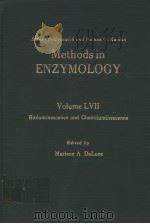
- METHODS IN ENXYMOLOGY VOLUME LVII BIOLUMINESCENCE AND CHEMILUMINESCENCE
- 1978 ACADEMIC PRESS
-
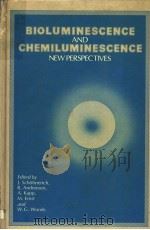
- BIOLUMINESCENCE AND CHEMILUMINESCENCE NEW PERSPECTIVES
- 1987年 JOHN WILEY & SONS
提示:百度云已更名为百度网盘(百度盘),天翼云盘、微盘下载地址……暂未提供。➥ PDF文字可复制化或转WORD
